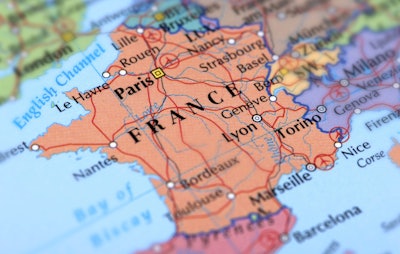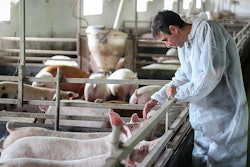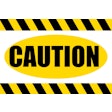
French COVID-19 quarantine rules did not restrict 2020 feed production
The French feed industry demonstrates stable production rates in 2020, despite structural market changes due to COVID-19 and shifts in customer habits. As many of its producers prepare for a further expansion in 2021, the government plans to provide EUR1.2 billion (US$1.41 billion) to help the industry better deal with the pandemic and its consequences, including strict quarantine measures and a drop in demand for feed from the local agricultural industry.
Contrary to the predictions of some analysts, the French feed sector has already reached its pre-pandemic figures this year. That creates conditions for its further development and stimulates producers to relaunch their investment projects, where the implementation was suspended during the peak of the 2020 pandemic in France.
According to Valérie Bris, deputy director of animal division of the public association French Agricultural Cooperative or La Coopération Agricole, which unites 2,300 agricultural and agrifood companies in France, “Feed production in 2020 was quite similar to that in 2019. In 2020, we see a slight decrease in feed production of 0.5%. However, some market segments have suffered particularly from the cessation of out-of-home catering. These are quail, guinea fowl and roasting duck, poultry that are consumed more often outside the home.”
Segments slightly down
According to Bris, the declines in feed production for these species have been offset by increases in feed production for chicken and laying hens as consumers have turned to eggs and chicken meat.
In the first half of 2021, according to La Coopération Agricol data, the overall feed production fell by 1.2%. The biggest decrease was observed in case of poultry feed production (-4%), mainly due to the avian flu outbreak in southwest France at the beginning of the year.
There also was a decrease in the production of feed for pigs (-3%) and more particularly for sows.
At the same time, the production of feed for ruminants has shown positive dynamics since the beginning of 2021 (+4%).
Due to this, most of producers look to the future with optimism.
“COVID has had no direct impact on our production beyond the impact on livestock, meat and egg industries that had to adapt quickly to closure of ‘restauration hors foyer,’ an impact that is still difficult to quantify,” says Manuel Maire, ADM Animal Nutrition‘s general manager, France and Northern Europe. “There also were minimal side effects on some of our products sold through specialized stores that had to shut down. However, COVID has had a commercial impact by preventing us from participating in several trade shows and fairs that are essential to expanding our brand awareness and positioning in new markets within our sector. As with many companies, we needed to adjust our internal operations to continue producing while implementing measures focused on the health and safety of colleagues.”
According to Maire, stable positions of the company in France and its wide portfolio creates conditions for the “company’s further expansion into northern and eastern Europe, relying in particular on our teams and means of production in France.”
Lessons learned
In the meantime, other producers have also confirmed the existing negative effects of the pandemic on their business, which, however, will not be associated with the revision of their plans of production and development.
“Food and feed industry have been impacted during COVID, although it showed much greater resilience than the other industries,” said Thomas Pacalier, a senior marketing manager of Alltech France. “Especially with a decrease in international trading and tendency for countries to stock more. This created an increase of price for raw materials and also highlighted the dependency of the country to raw ingredients such as soybeans. There is also a decrease in the demand for food by 6% with households tending to reduce their spending and changes in consumption habits. This is impacting all the businesses around agriculture and, for the feed and supplement industry, the impact is mostly due to the inability to meet in person and promote direct offers, but also a relative fear around investments in relation to an uncertain context.”
At the same time, Nicole Marlor, Cargill‘s director of media relations and issues response – EMEA, also said that COVID didn’t directly impact the total volume produced but has impacted the consumption and location patterns with consequences on some markets.
“For example, we have seen a decline in caged eggs and increase in alternative eggs, an increase in demand for whole chickens and a decrease in turkeys, and a decrease in poultry distributed in restaurants, i.e. guinea fowl, ducks,” Marlor says. “The biggest impact on the market that we have seen is due to avian influenza.”
 In 2021, the French government will provide EUR1.2 billion in COVID recovery aid to its national agricultural and feed sectors. (Courtesy Alltech)
In 2021, the French government will provide EUR1.2 billion in COVID recovery aid to its national agricultural and feed sectors. (Courtesy Alltech)Local demand down
In regards to local demand, ADM’s Maire says the demand for animal feed in France follows the tendency of the past 10 years with an average 1% reduction rate per year over the previous year and COVID did not change this trend.
Two external factors have had a greater impact on the short term, Maire says. ASF had an important positive effect on swine production when Chinese imports abruptly stopped. And, in France and in Europe, the company expects large pork supplies, far above demand, with foreseeable consequences.
Furthermore, bird flu shut down duck production in southwest France for almost a year. The poultry industry is now recovering step by step.
Almost the same position is shared by Bris, who predicts the demand for animal feed in France is expected to continue with the slow erosion it has been experiencing for several years in line with the decline in animal production in our territory.
Bris expects that, in the second part of the year, poultry feed production should recover with the end of the avian flu outbreak.
That should create conditions for an increase in domestic feed production. Experts of the French National Union of the Animal Nutrition Industry (SNIA) say the development of certain production patterns, such as organic farming, suggests potential increases in production in the coming years.
Pacalier notes: “France produces between 20 (million) and 21 million tons of compound feed for farm animals, all species combined. In recent years, the French production of compound feed has seen a marked decrease. There is a 10% loss in volumes produced between 2000 and 2018. Since 2018, this trend seems to be reversing, with a slight recovery in total tonnage manufactured. Between 2018 and 2019, production increased by 0.05% and more than 20.8 million tons were produced over the year. The increase in total tonnage manufactured in 2019 represents a gain of nearly 11,000 tons of feed compared to the previous year showing a tendency to increase for the future.”













